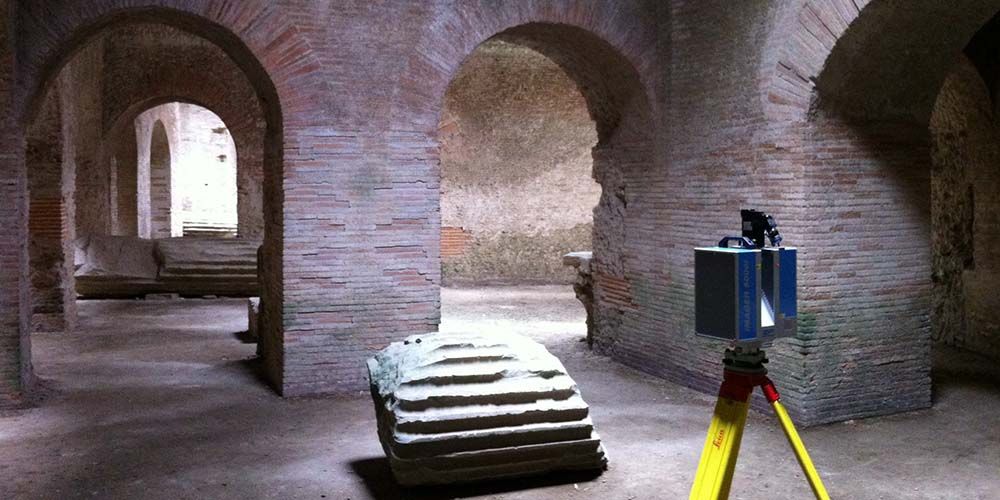“It’s easy to get lost in the Colosseum,” said Adam Barnes, a researcher at the Center for Advanced Spatial Technologies at the University of Arkansas.
And he knows the ancient structure better than most as part of a CAST research team that traveled to Rome to use the center’s cutting-edge remote sensing laser technology to build a 3-D perspective of a nearby similar amphitheater to find answers about the iconic structure’s past.
CAST researchers are featured in the second season of Time Scanners, a three-part documentary series airing on PBS this month. Tonight’s episode features the Colosseum. On Dec. 23 the series shifts to Jerusalem. Both shows are scheduled for broadcast at 9 p.m. CST.
Time Scanners showcases CAST laser-scanning experts collecting and analyze billions of measurements. They use the data collected by laser scanners to produce what is known as a 3-D point cloud.
“We were able to collect amazing data at an amphitheater in the city of Pozzuoli,” Adam said. “Once you can see everything in 3-D, the Colosseum’s architecture and engineering made perfect sense.”
Built of concrete and sand and standing 12 stories tall, the Colosseum was completed in the first century A.D. and stands as the symbol of the Roman Empire. It is considered one of the greatest works of architecture and engineering, but its numerous levels, passageways and rooms can cause confusion for a visitor.
The CAST team was tasked with finding out how the Romans produced some of the most impressive gladiator games ever seen in Europe, how the Colosseum’s mysterious roof worked and how the structure performs in state-of-the-art computer testing against today’s sports stadiums.
In Jerusalem, the team analyzed structures made at the time of Christ. They scanned the vast walls of the Temple Mount – the holiest site in Judaism – and Herodium, a man-made hill about seven miles south of Jerusalem that is believed to be the burial site of Herod the Great. The team was also given unique access to scan the iconic Western Wall at the Temple of the Mount, also known as the Wailing Wall.
“My favorite part of this trip was working Herodium, which is in the West Bank,” Adam said. “The views from the top of the hill were incredible and it was just a pleasant location to work for several days.”
The first season of Time Scanners aired on PBS and National Geographic International in 2014. The episodes featured CAST experts scanning the pyramids in Egypt, St. Paul’s Cathedral in London and the ancient desert city of Petra in Jordan.







You must be logged in to post a comment.